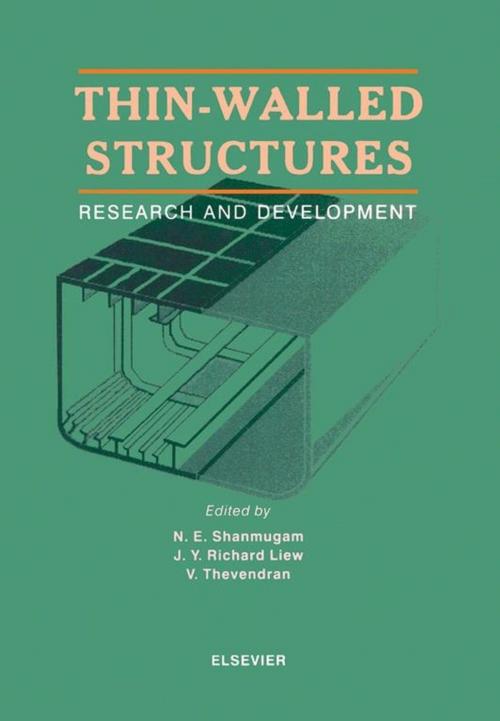Thin-Walled Structures
Research and Development
Nonfiction, Science & Nature, Technology, Engineering, Civil| Author: | ISBN: | 9780080552057 | |
| Publisher: | Elsevier Science | Publication: | November 27, 1998 |
| Imprint: | Elsevier Science | Language: | English |
| Author: | |
| ISBN: | 9780080552057 |
| Publisher: | Elsevier Science |
| Publication: | November 27, 1998 |
| Imprint: | Elsevier Science |
| Language: | English |
Thin-plated structures are used extensively in building construction, automobile, aircraft, shipbuilding and other industries because of a number of favourable factors such as high strength-weight ratio, development of new materials and processes and the availability of efficient analytical methods. This class of structure is made by joining thin plates together at their edges and they rely for their rigidity and strength upon the tremendous stiffness and load-carrying capacity of the flat plates from which they are made. Many of the problems encountered in these structures arise because of the effects of local buckling. The knowledge of various facets of this phenomenon has increased dramatically since the 1960s. Problem areas which were hitherto either too complex for rigorous analysis or whose subtleties were not fully realized have in these years been subjected to intensive study. Great advances have been made in the areas of inelastic buckling. The growth in use of lightweight strong materials, such as fibre-reinforced plastics has also been a contributory factor towards the need for advances in the knowledge of the far post-buckling range. The conference is a sequel to the international conference organised by the University of Strathclyde in December 1996 and this international gathering will provide the opportunity for discussion of recent developments and trends in design of thin-walled structures.
Thin-plated structures are used extensively in building construction, automobile, aircraft, shipbuilding and other industries because of a number of favourable factors such as high strength-weight ratio, development of new materials and processes and the availability of efficient analytical methods. This class of structure is made by joining thin plates together at their edges and they rely for their rigidity and strength upon the tremendous stiffness and load-carrying capacity of the flat plates from which they are made. Many of the problems encountered in these structures arise because of the effects of local buckling. The knowledge of various facets of this phenomenon has increased dramatically since the 1960s. Problem areas which were hitherto either too complex for rigorous analysis or whose subtleties were not fully realized have in these years been subjected to intensive study. Great advances have been made in the areas of inelastic buckling. The growth in use of lightweight strong materials, such as fibre-reinforced plastics has also been a contributory factor towards the need for advances in the knowledge of the far post-buckling range. The conference is a sequel to the international conference organised by the University of Strathclyde in December 1996 and this international gathering will provide the opportunity for discussion of recent developments and trends in design of thin-walled structures.















